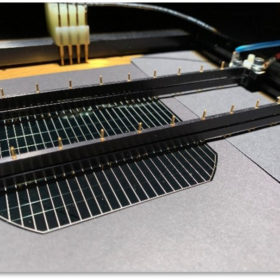Scaling up perovskite-silicon tandem solar cell performance
Scientists in Germany investigated various routes to optimizing cell design for perovskite-silicon tandem products. Beyond the perovskite layer itself, they note several other areas that should be optimized for tandem cells, taking silicon heterojunction processing as a starting point. The research identifies several routes to cut costs in cell production, including a significant reduction in indium consumption.
A window of opportunity for new transparent electrode
Scientists in Australia have developed a new transparent conductive oxide which could be used in solar cells, smart windows and other applications. The material is indium free and recyclable, according to the researchers.
MIT scientists develop a coating for perovskites
Researchers at the Massachusetts Institute of Technology have developed a transparent coating they successfully incorporated into a perovskite solar cell, increasing efficiency and stability. The group says with further improvements the material could be used as a simpler, less expensive alternative to widely used indium tin oxide as a transparent conductive material for a range of applications.
UK scientists find way to cut down indium
A research team led by the University of Liverpool has developed a transparent conductive oxide material to replace tin with molybdenum. The results demonstrated better performance and potentially lower material costs than the transparent conducting layers used in today’s commercial solar cells.




